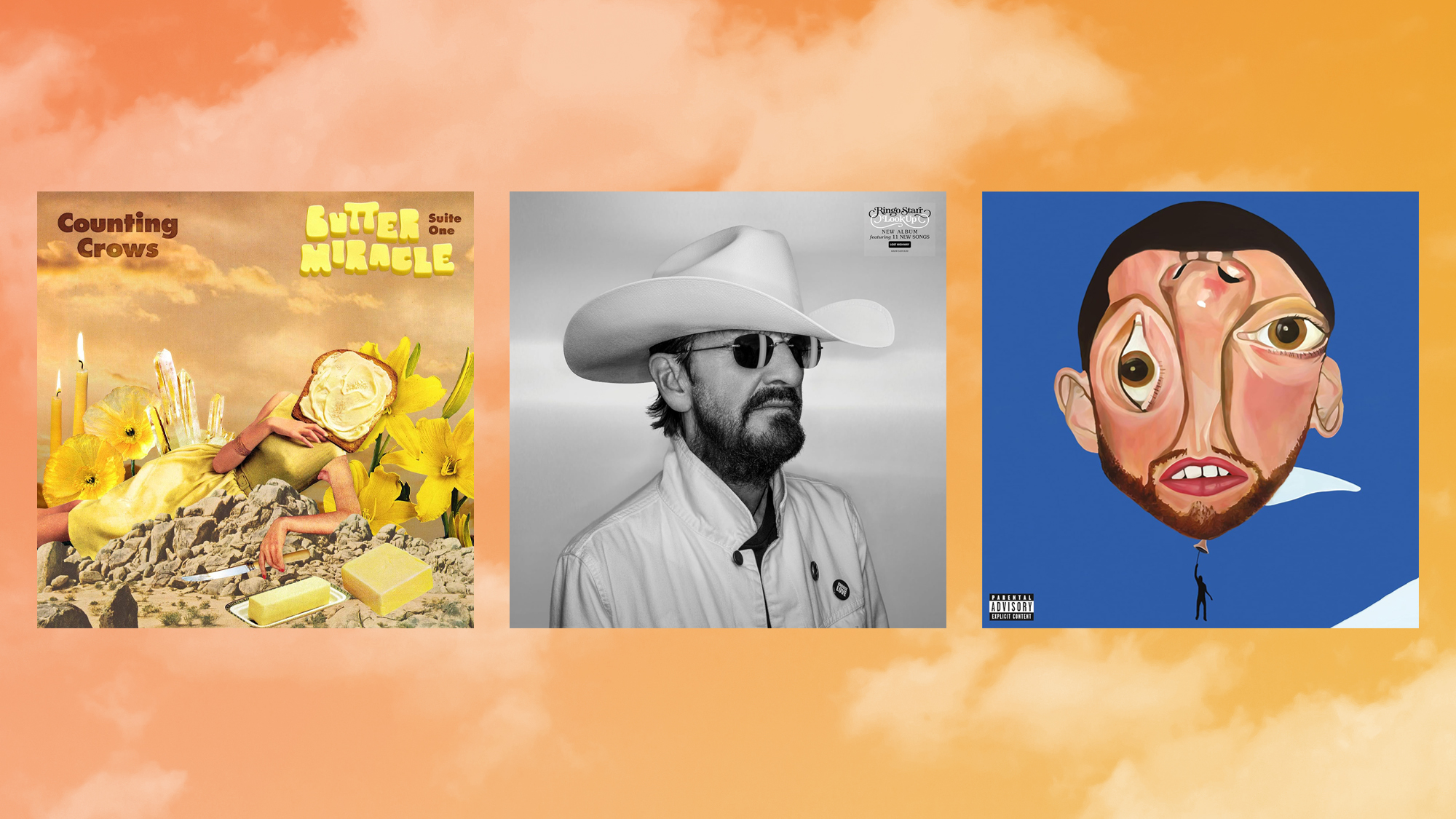Review of reviews: Books
What the critics said about the best new books: A Life of Picasso: The Triumphant Years, 1917–1932; Gomorrah: A Personal Journey Into the Violent International Empire of Naples’ Organized Crime System
Book of the week
A Life of Picasso: The Triumphant Years, 1917–1932
by John Richardson
The Week
Escape your echo chamber. Get the facts behind the news, plus analysis from multiple perspectives.

Sign up for The Week's Free Newsletters
From our morning news briefing to a weekly Good News Newsletter, get the best of The Week delivered directly to your inbox.
From our morning news briefing to a weekly Good News Newsletter, get the best of The Week delivered directly to your inbox.
(Knopf, $40)
Pablo Picasso never hid how he felt about the women in his life. In his early portraits of his first wife, Olga Khokhlova, he often depicted the former Ballets Russes dancer as a pure soul or noble beauty. The sentimentality appalled his bohemian friends. But the painter’s imagery grew more adventuresome as his marriage deteriorated. Olga became a screaming shrew, a horse, a knife-wielding murderer—her tongue a dagger and her eyes stacked like sandbags. Ten years into their marriage, the 45-year-old Picasso had begun a passionate affair with a voluptuous teenager he met on a Paris street. “I feel,” he told 17-year-old Marie-Thérèse Walter, “we are going to do great things together.” The third volume in John Richardson’s great and gossipy biography makes the most of the sparks that followed, said James Panero in The New York Sun. The book catches Picasso during an odd middle-age interlude between cubism and his great anti-war work, Guernica. Its protagonist spends the book’s first 10 years almost sleepwalking his way into glamorous social circles and bourgeois comforts. But sex with Marie-Thérèse inspired an avalanche of bold work and an enduring new visual vocabulary for the artist. “Ever the willing accomplice,” Richardson is “never at a loss for words” when confronted with canvases that celebrate Picasso’s life between the sheets. Nor should he be, said Peter Plagens in Newsweek. “Sex sells,” and if there’s one reason Picasso vaulted past Duchamp, Matisse, and Dalà to become our “quintessential modern artist,” it’s that he made “avant-garde art sexy.” Picasso had anything but a one-track mind, though, said Jed Perl in The New York Times. In fact, Richardson’s “powerhouse of a book” should help overturn the old-fashioned idea that his cubist period was his pinnacle. Picasso was obliged to move on to new things because his brand of modernism embraced “variety and paradox.” As Richardson shows us, said Hilary Spurling in the London Observer, his true ambition was “to stamp his image on everything in sight.” When he transformed mouths into vaginas and breasts into penises, he was presenting himself as a new god. When he created those cruel, violent images of poor Olga, he was attempting to confront and exorcise the violence of his turbulent times.
Gomorrah: A Personal Journey Into the Violent International Empire of Naples’ Organized Crime System
by Roberto Saviano;
A free daily email with the biggest news stories of the day – and the best features from TheWeek.com
translated by Virginia Jewiss
(Farrar, Straus & Giroux, $25)
Organized crime in Naples, Italy, was once a local problem. While Sicily’s Mafia garnered the international headlines and movie tributes, Naples’ Camorra settled for extorting locals and smuggling cigarettes. But globalization opened up new possibilities. In the Port of Naples recently, a crane operator was horrified when a refrigerated container he was moving broke open and spilled dozens of bodies onto the pavement. They were dead immigrants; their corpses were being shipped illegally to China for burial. Elsewhere at the port, says journalist Roberto Saviano, toxic waste was probably being accepted by Camorra-tied firms willing to mix it into cement or bury it in cemeteries. Contraband Chinese goods, he says, were surely arriving that day on scores of vessels. A private study released this fall identified organized crime as Italy’s largest business sector. Saviano claims that Naples is now the country’s organized crime capital. Saviano takes this sickening development personally, said New York. A native of a Neapolitan suburb, the 28-year-old author happened upon his first gangland murder victim as a teenager, and these days he “seems to arrive on his Vespa” moments after every bloody rub-out that stains his city anew. Gomorrah is a brave book, said Richard Horan in The Christian Science Monitor. “One of the most in-depth accounts ever written” about Italy’s criminal underworld, the book names names as it exposes countless international rackets in high fashion, drugs, and waste disposal. Saviano received death threats when the book became a best-seller in Italy, and the Italian government was shamed into providing him with three full-time bodyguards. He comes across here as a modernday Virgil, an insistently moral voice whose street-friendly language is spiced by “colorful metaphors and snappy epigrams.” The translation is loaded with hiccups, said Antony Shugaar in The Washington Post. Italian soldiers here wear “amphibians” instead of boots, and mob gunmen “unload a charger” instead of emptying their clips. Saviano also inserts himself in his story more than he should. Even so, Gomorrah remains consistently “gripping.” Its vivid scenes of murder, torture, and greed entrance the reader “like dioramas from some lurid museum.”
-
 Could smaller cars bring down vehicle prices?
Could smaller cars bring down vehicle prices?Today’s Big Question Trump seems to think so, but experts aren’t so sure
-
 2025’s most notable new albums
2025’s most notable new albumsThe Week Recommends These were some of the finest releases of the past year
-
 Trump aims to take down ‘global mothership’ of climate science
Trump aims to take down ‘global mothership’ of climate scienceIN THE SPOTLIGHT By moving to dismantle Colorado’s National Center for Atmospheric Research, the White House says it is targeting ‘climate alarmism’
-
Also of interest...in picture books for grown-ups
feature How About Never—Is Never Good for You?; The Undertaking of Lily Chen; Meanwhile, in San Francisco; The Portlandia Activity Book
-
Author of the week: Karen Russell
feature Karen Russell could use a rest.
-
The Double Life of Paul de Man by Evelyn Barish
feature Evelyn Barish “has an amazing tale to tell” about the Belgian-born intellectual who enthralled a generation of students and academic colleagues.
-
Book of the week: Flash Boys: A Wall Street Revolt by Michael Lewis
feature Michael Lewis's description of how high-frequency traders use lightning-fast computers to their advantage is “guaranteed to make blood boil.”
-
Also of interest...in creative rebellion
feature A Man Called Destruction; Rebel Music; American Fun; The Scarlet Sisters
-
Author of the week: Susanna Kaysen
feature For a famous memoirist, Susanna Kaysen is highly ambivalent about sharing details about her life.
-
You Must Remember This: Life and Style in Hollywood’s Golden Age by Robert Wagner
feature Robert Wagner “seems to have known anybody who was anybody in Hollywood.”
-
Book of the week: Astoria: John Jacob Astor and Thomas Jefferson’s Lost Pacific Empire by Peter Stark
feature The tale of Astoria’s rise and fall turns out to be “as exciting as anything in American history.”